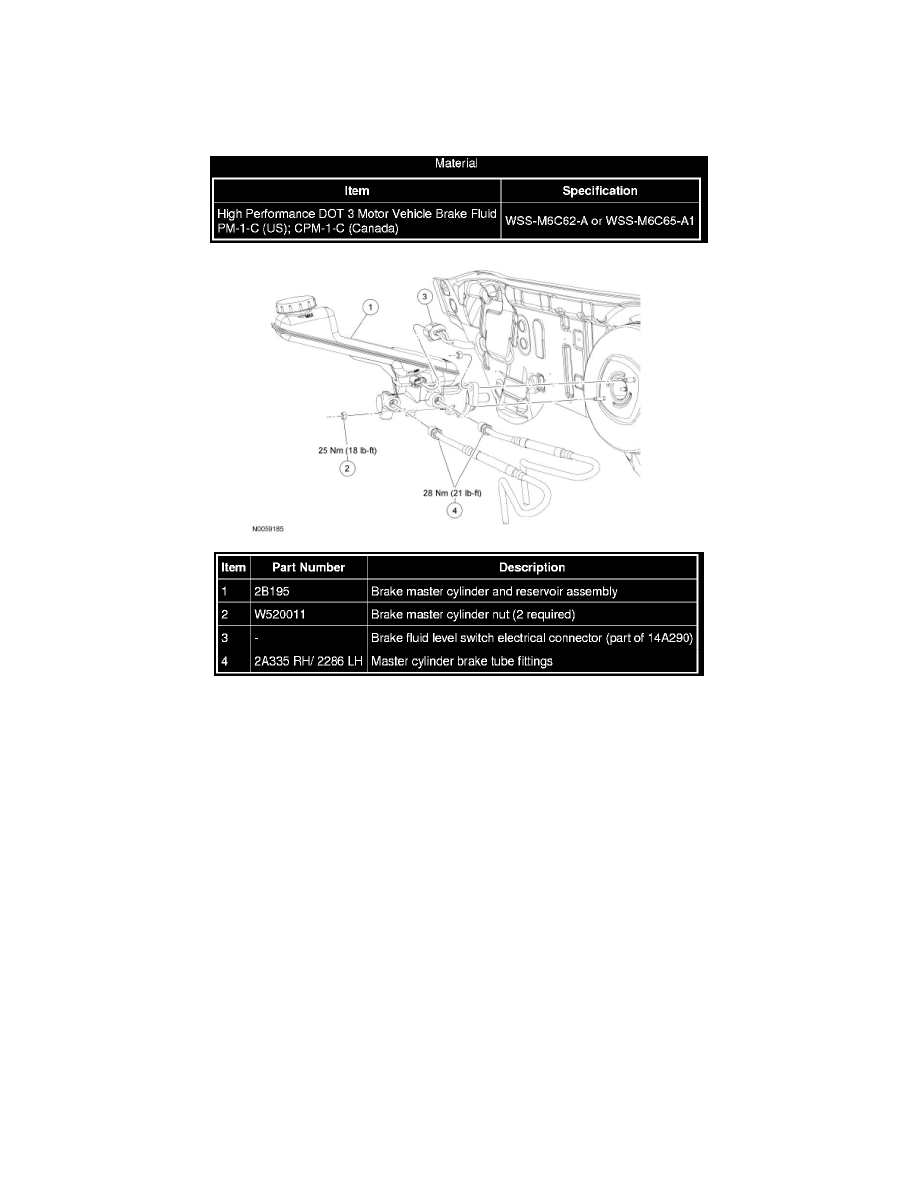Edge AWD V6-3.5L (2009)

Brake Master Cylinder: Removal and Replacement
Brake Master Cylinder
Brake Master Cylinder
Removal and Installation
WARNING: Do not use any fluid other than clean brake fluid meeting manufacturer's specification. Additionally, do not use brake fluid that
has been previously drained. Following these instructions will help prevent system contamination, brake component damage and the risk of
serious personal injury.
WARNING: Carefully read cautionary information on product label. For EMERGENCY MEDICAL INFORMATION seek medical advice.
For additional information, consult the product Material Safety Data Sheet (MSDS) if available. Failure to follow these instructions may result
in serious personal injury.
NOTICE: Do not spill brake fluid on painted or plastic surfaces or damage to the surface may occur. If brake fluid is spilled onto a painted or
plastic surface, immediately wash the surface with water.
1. Remove the Air Cleaner (ACL) and ACL outlet tube.
2. Remove the battery and battery tray.
3. NOTICE: The brake booster check valve must be disconnected (prior to removing the master cylinder) or the master cylinder seal may be
drawn into the brake booster.
Disconnect the brake booster check valve from the booster to deplete the residual vacuum in the brake booster.
4. Disconnect the brake fluid level switch electrical connector.
5. Disconnect the master cylinder brake tube fittings, plug the brake tubes and the brake master cylinder ports.
-
To install, tighten to 28 Nm (21 lb-ft).
